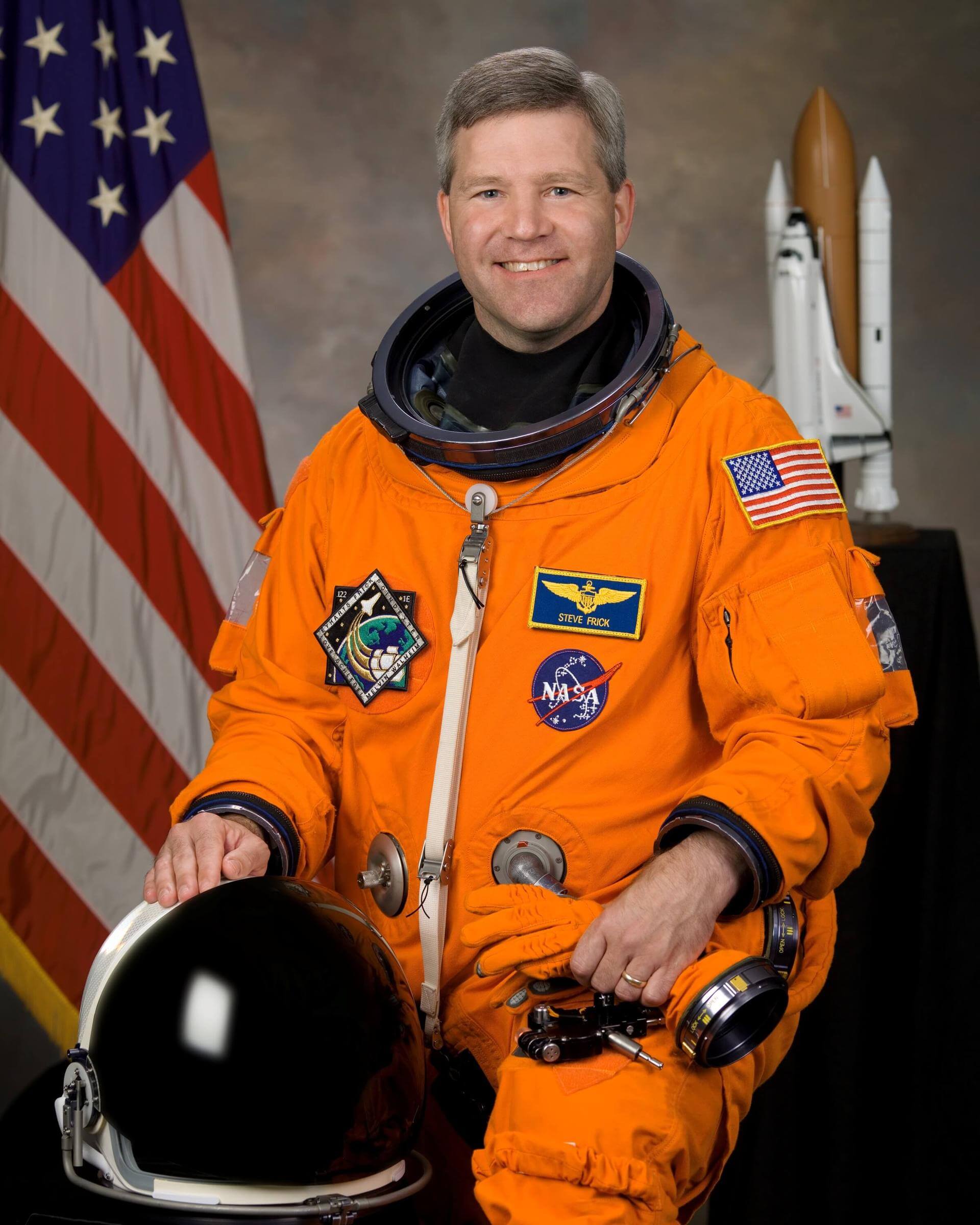Stephen Frick
American - (NASA)
Retired
Date of Birth: Sept. 30, 1964
Age: 61
Stephen Nathaniel Frick is an American astronaut and a veteran of two Space Shuttle missions. Raised in Pittsburgh, Pennsylvania, Frick graduated from Pine-Richland High School in 1982, earned a degree in aerospace engineering from the United States Naval Academy in 1986, was commissioned as a United States Navy officer, and trained as a F/A-18 fighter pilot. Stationed aboard the carrier USS Saratoga, he flew combat missions during the Gulf War and then earned a master's degree in aeronautical engineering from the Naval Postgraduate School in 1994. Frick was selected as a NASA astronaut candidate in 1996 and was trained as a Space Shuttle pilot. He piloted mission STS-110, a docking mission with the International Space Station. In July 2006, Frick was assigned to command the crew of STS-122. The 12-day mission delivered the European Space Agency's Columbus laboratory and returned Expedition 16 Flight Engineer Daniel M. Tani to Earth. The mission launched February 7, 2008, and touched down February 20, 2008. NASA announced his retirement in July 2015.
Space Shuttle Atlantis / OV-104 | STS-110
National Aeronautics and Space Administration | United States of AmericaKennedy Space Center, FL, USA
April 8, 2002, 8:44 p.m.
Status: Success
Mission:
STS-110 was a Space Shuttle mission to the International Space Station (ISS) on 8–19 April 2002 flown by Space Shuttle Atlantis. The main purpose was to install the S0 Truss segment, which forms the backbone of the truss structure on the station.
Low Earth OrbitSpace Shuttle Atlantis / OV-104 | STS-122
National Aeronautics and Space Administration | United States of AmericaKennedy Space Center, FL, USA
Feb. 7, 2008, 7:45 p.m.
Status: Success
Mission:
STS-122 was a NASA Space Shuttle mission to the International Space Station (ISS), flown by the Space Shuttle Atlantis. STS-122 marked the 24th shuttle mission to the ISS, and the 121st space shuttle flight overall. The mission was also referred to as ISS-1E by the ISS program. The primary objective of STS-122 was to deliver the European Columbus science laboratory, built by the European Space Agency (ESA), to the station. It also returned Expedition 16 Flight Engineer Daniel M. Tani to Earth. Tani was replaced on Expedition 16 by Léopold Eyharts, a French Flight Engineer representing ESA. After Atlantis' landing, the orbiter was prepared for STS-125, the final servicing mission for the Hubble Space Telescope.
Low Earth OrbitThe National Aeronautics and Space Administration is an independent agency of the executive branch of the United States federal government responsible for the civilian space program, as well as aeronautics and aerospace research. NASA have many launch facilities but most are inactive. The most commonly used pad will be LC-39B at Kennedy Space Center in Florida.
Long March 3B/E
Fengyun-4C
Launch Complex 2 (LC-2) - Xichang Satellite Launch Center, People's Republic of ChinaChina's geostationary meteorological satellite program FY-4 (Feng Yun 4) is the second generation of chinese geostationary meteorological satellites.
Long March 8A
SatNet LEO Group 17
Commercial LC-1 - Wenchang Space Launch Site, People's Republic of ChinaA batch of 9 Low Earth Orbit communication satellites for the Chinese state owned SatNet constellation operated by the China Satellite Network Group.…
Soyuz 2.1a
Obzor-R No.1
43/4 (43R) - Plesetsk Cosmodrome, Russian FederationNote: Assignment of payloads to this launch is uncertain. The Russian Obzor-R satellite is a planned X-band radar earth observation satellite desi…
LVM-3 (GSLV Mk III)
BlueBird Block 2 #1
Satish Dhawan Space Centre Second Launch Pad - Satish Dhawan Space Centre, IndiaAST SpaceMobile’s Block 2 BlueBird satellites are designed to deliver up to 10 times the bandwidth capacity of the BlueBird Block 1 satellites, requi…
Long March 12A
Demo Flight
Long March 12A Pad - Jiuquan Satellite Launch Center, People's Republic of ChinaFirst test launch of CASC/SAST’s Long March 12A rocket, with a dummy payload. The rocket’s 1st stage attempted to land on a landing pad about 300 km …



